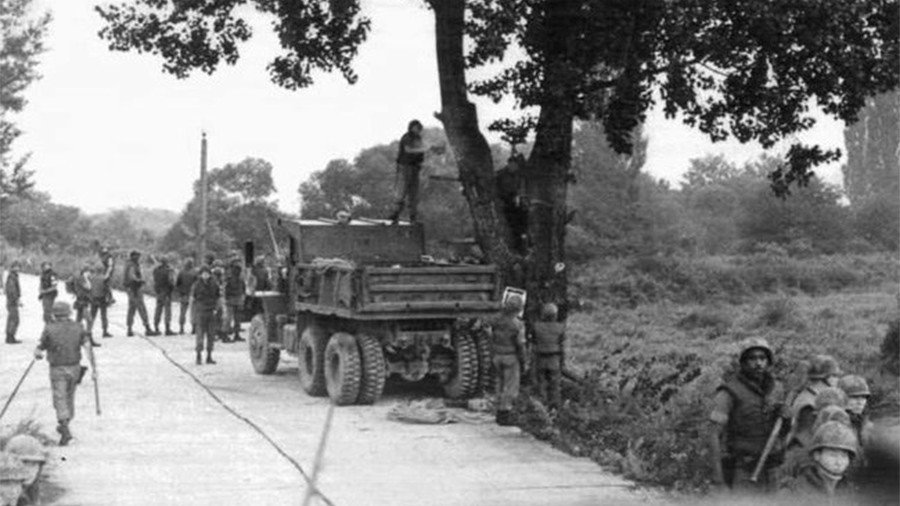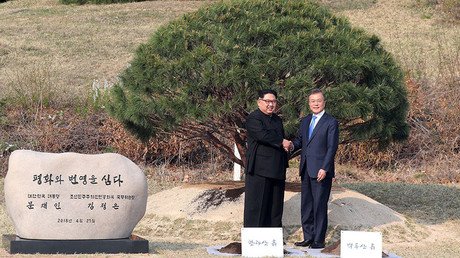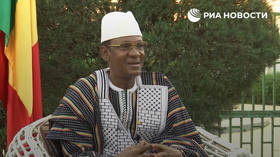‘Axe murder case’: How the South Korean president once got into a border clash over a tree

Planting a tree with Kim Jong-un may have brought back memories for the South Korean president. Four decades ago, he played a role in another tree-related event on the border, which involved two dead Americans.
President Moon Jae-in and his North Korean counterpart made plenty of symbolic gestures during this week’s summit in the demilitarized zone (DMZ), including planting a pine tree on the border with soil taken from both sides of the divided peninsula. But in August 1976, Moon, who was a soldier in the US-led forces at the time, participated in an equally symbolic incident focused around another tree on the border. He and fellow troops cut it down.
Usually remembered as Korean axe murder incident in the US, the confrontation started when two US Army officers and a group of enlisted men went to trim a poplar tree that obstructed a line of sight between the two sides. While the soldiers were doing this, their counterparts from the north showed up and confronted them, claiming that the tree had been planted by North Korean leader Kim Il-sung himself.
Both sides accused the other of provoking the fight, but what is undisputed is that the two American officers were killed, reportedly with their own axes they had brought with them. Three days later, the US-led forces launched Operation Paul Bunyan – a show of force in response to the killings.
The action involved 23 American and South Korean vehicles, and the sneaking of assault rifles, grenade launchers and claymore mines into the area, where weapons were restricted, 20 attack helicopters circling in the air, and a B-52 Stratofortress bomber escorted by fighter jets patrolling high in the sky. Backed by this might, military engineers cut down the tree, leaving behind only a stump.
South Korean President Moon Jae-in Was Former Commando Who Was Part of Operation Paul Bunyan https://t.co/ihQUGMniRk
— GIKorea (@GIKorea) May 14, 2017
Moon Jae-in, whose family fled the North during the war, was one of the Korean commando troops involved in the operation – although reportedly not one of those who smuggled the Claymore mines strapped to their chests, taunting the North Koreans.
A conscript, he didn’t pursue a military career after his term expired and instead continued his pursuits in rights activism and law.
Think your friends would be interested? Share this story!















